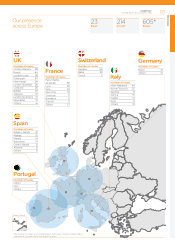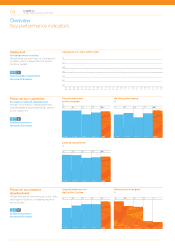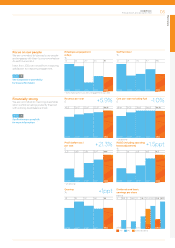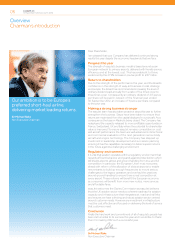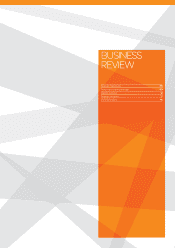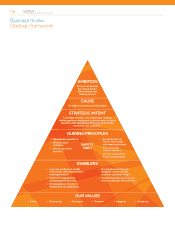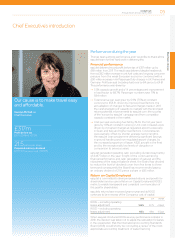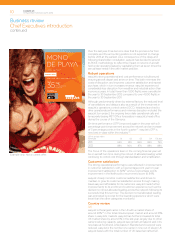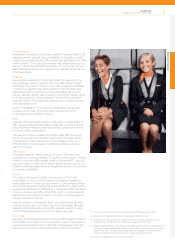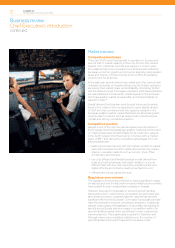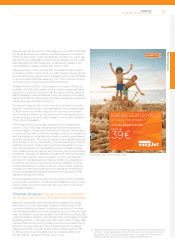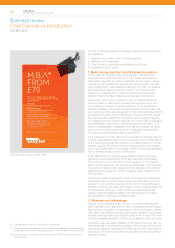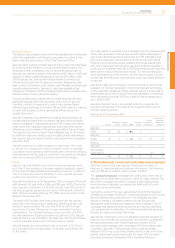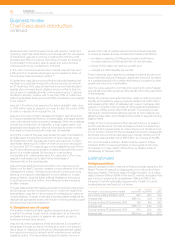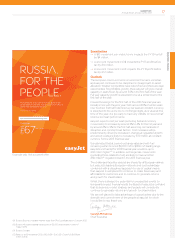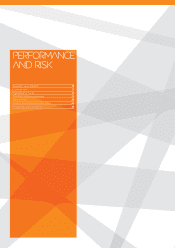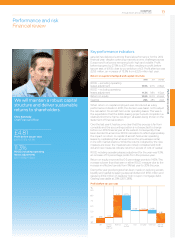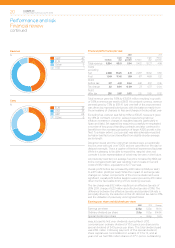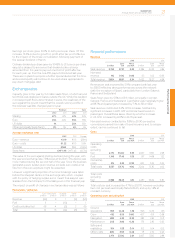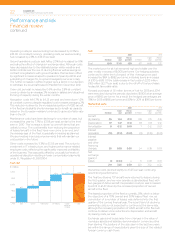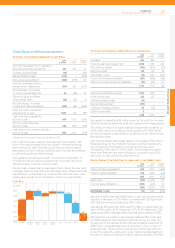EasyJet 2012 Annual Report Download - page 15
Download and view the complete annual report
Please find page 15 of the 2012 EasyJet annual report below. You can navigate through the pages in the report by either clicking on the pages listed below, or by using the keyword search tool below to find specific information within the annual report.
easyJet supports the work to make airspace more efficient through
the Single European Sky initiative, and the European Commission’s
efforts to drive lower costs into airspace. Europe now has a real
opportunity to address the inefficiencies in airspace, and it is vital
that individual Member States are not allowed to escape their
responsibilities to deliver change and control costs.
easyJet remains concerned with the continual increase in taxes
onaviation across Europe, which is undermining European growth
and ultimately jobs. easyJet has undertaken work to demonstrate
togovernments that these taxes are not in their interest or those
ofconsumers or people working within the sector.
Towards the end of 2012, the European Commission will set out
aredraft of the EU 261 regulations, which govern passenger rights.
easyJet is focused on ensuring that the reform brings clarity to
airline obligations. easyJet believes in the importance of providing
passengers with the right level of protection, but also the protection
passengers value and want to pay for.
The airports easyJet flies to are central to its business model.
easyJet’s network focuses on primary airports where people want
to fly to and this provides easyJet with access to important
catchments and drives up unit revenues. Primary airports tend
tohave pricing power and could engage in monopolistic behaviour
if they are not regulated.
Where airports are monopolies, regulation is the only effective
answer. Only in this way will passengers be protected from
excessive airport charges and poor service. easyJet has focused
onensuring that there is effective regulation where it is needed, but
also that regulators understand the needs of point-to-point airlines
and their passengers. There is cost pressure from regulated airports
across Europe from a combination of lower passenger volumes,
restricted access to finance and upcoming regulatory reviews.
Thecost increases from the regulatory reviews in Spain and Italy
were disappointing for easyJet and there are upcoming reviews
at Gatwick, Geneva and Stansted. To address the risk of increasing
airport costs, easyJet has put in place a more sophisticated
approach to regulated airport charges building on experience
ofworking with governments and economic regulators. This has
involved developing economic evidence on the impact of airport
charges, providing technical input into regulatory reviews and
ensuring that easyJet is properly represented in discussions with
regulators and governments.
At non-regulated airports, easyJet has worked where possible
toputin place long-term contracts that mitigate the risk of future
cost increases and ensure that easyJet can build on a long-term
sustainable platform.
Strategic progress: easyJet is uniquely positioned to
bethe structural winner in European short-haul aviation
easyJet is structurally positioned as the strongest pan European
airline due to its cost advantage, leading market positions at
convenient airports and great customer proposition of low fares
with friendly and efficient service supported by one of the strongest
balance sheets in European aviation. As inefficient and financially
weak competitors retrench, easyJet will continue its strategy to build
its leading position on Europe’s top 100 routes where it has a 25%
market share to become the leading point-to-point airline flying
between primary airports. This will enable easyJet to deliver
passenger growth, in excess of the market overall, of around 3%
to5% per annum and tangible returns to shareholders of an
annual ordinary dividend of three times cover.
(4) Market share data from OAG. Size of European market based on internal easyJet
definition. Historic data based on the 12 month period from October 2011 to end
September 2012. Forward looking data based on available OAG information to
the end of March 2013 with assumptions made on Ryanair growth.
Example only. Not a current offer.
ROIS EN LEUR CHÂTEAU
et vous, vos envies ?
nice au départ de lille
à partir de
39€ aller simple,
taxes incluses
*
Business review
easyJet plc
Annual report and accounts 2012 13


